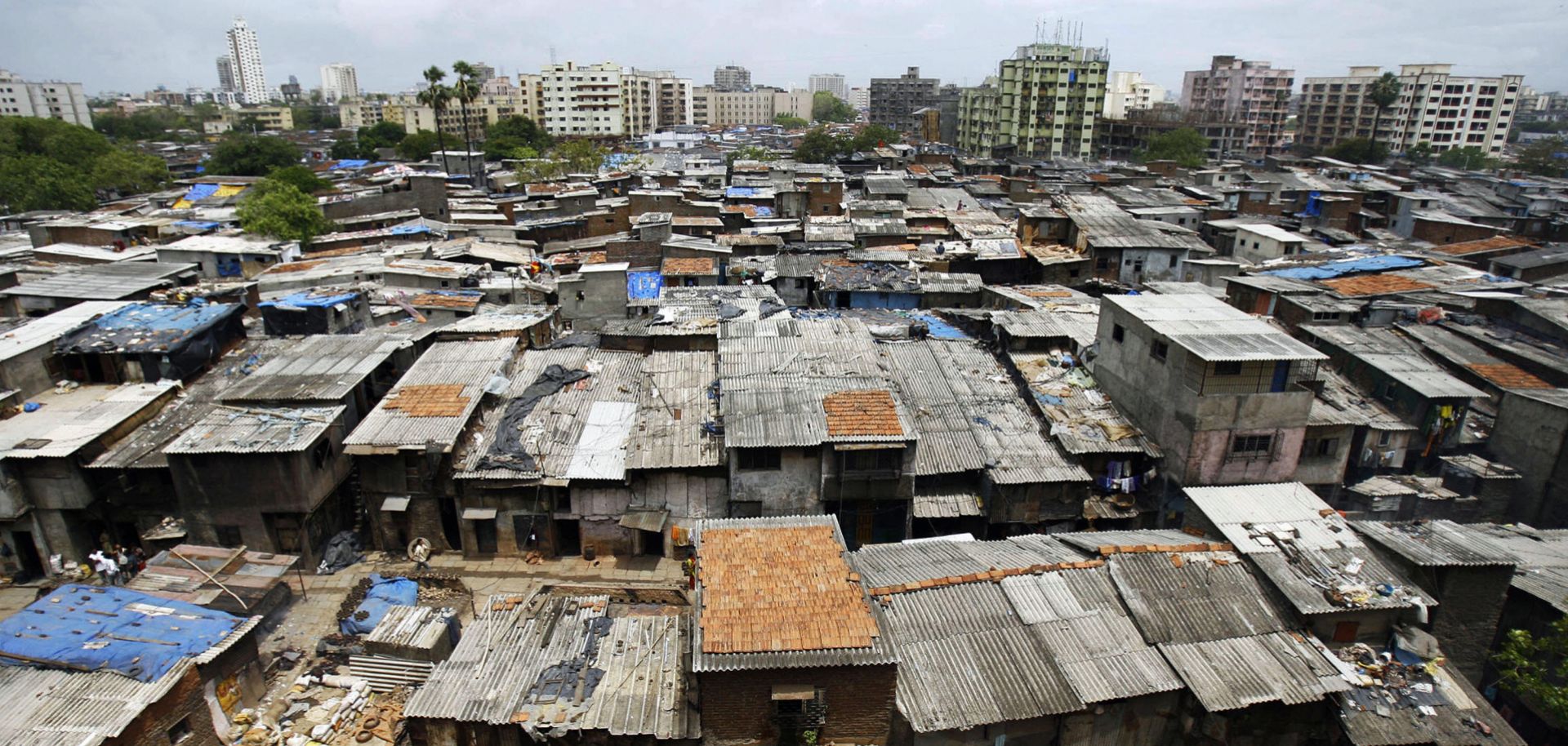ASSESSMENTS
Why India's Options to Reduce Inequality Are Limited
May 4, 2018 | 10:00 GMT

Office blocks and residential buildings tower over the notorious slum colony of Dharavi in Mumbai, India. In 2007, Asia's largest slum was a labyrinth of of one- and two-story shacks in the country's financial capital.
(SAJJAD HUSSAIN/AFP/Getty Images)
Subscribe Now
SubscribeAlready have an account?
